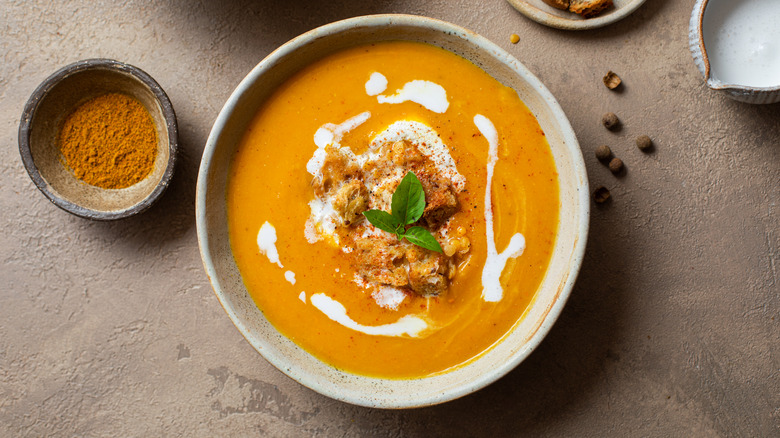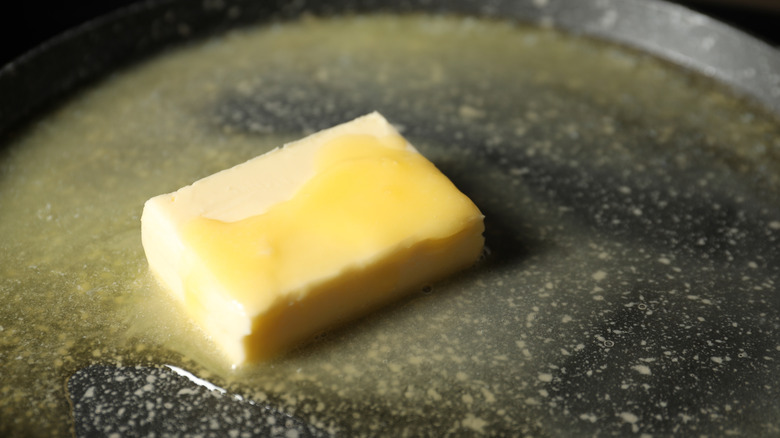The Butter Tip Restaurants Use For Chef-Worthy Soups
Somehow, good restaurants seem to make even the simplest dishes taste much better than the versions you make at home. For example, a seemingly standard tomato soup goes from a side dish to the star of the show, creamy and rich yet light and bursting with flavor and acidity. There are a few tips chefs have for creating a restaurant-worthy soup, including one focused on a particular ingredient — butter.
"Restaurant soups definitely contain more butter than homemade soups," chef Bernhard Mairinger admitted to Mashed. This is one of the primary reasons restaurant soups taste incredible, while yours falls a little flat in comparison. "A chef will always say fat equals flavor," added chef James DiBella. Butter enhances the flavor of just about any type of soup.
DiBella explained that the use of butter should start early in the cooking process, when you're sautéing some of the ingredients and building the flavor base for your soup. "Most chefs cook many of their ingredients in butter instead of vegetable or olive oil," said DiBella. "Considering how much more flavor butter imparts, it just makes sense." So, whether you're sautéing some onions until they're translucent, crisping up a bit of pancetta, or cooking your broccoli so it becomes tender, use butter to do it. To help you attain soup perfection, we've ranked 16 popular butter brands from worst to best and also crafted a comprehensive guide with 18 types of butter and how to use them.
Cooking better with butter
While butter itself doesn't add a strong flavor that actively competes with your soup, you do want to ensure you're mindful of what else it brings to your dish. For example, if you opt for salted butter, you may need to reduce the amount of salt called for in the recipe. However, since that salt helps preserve butter, unsalted varieties are usually a bit fresher by necessity, so they can actually be a good choice for soups.
And don't ignore the ways butter can help you achieve the perfect texture. Combine butter with a bit of flour until it has a paste-like consistency, then you'll have beurre manié, a secret ingredient for thickening your soup if you're making a creamy rather than broth-based recipe. If that sounds familiar, it may be because you've made a roux before; it's the same two ingredients. However, a roux is cooked, while beurre manié is not. All you need to do is whisk small portions of the beurre manié into your soup, then allow it to melt and work its magic.
Finally, pay attention to the finishing touches that restaurants add. They're often what elevate a soup from ordinary to otherworldly. Although you'll often see a swirl of olive oil, add a small pat of butter that will dissolve and bring a burst of extra fat and flavor instead.

